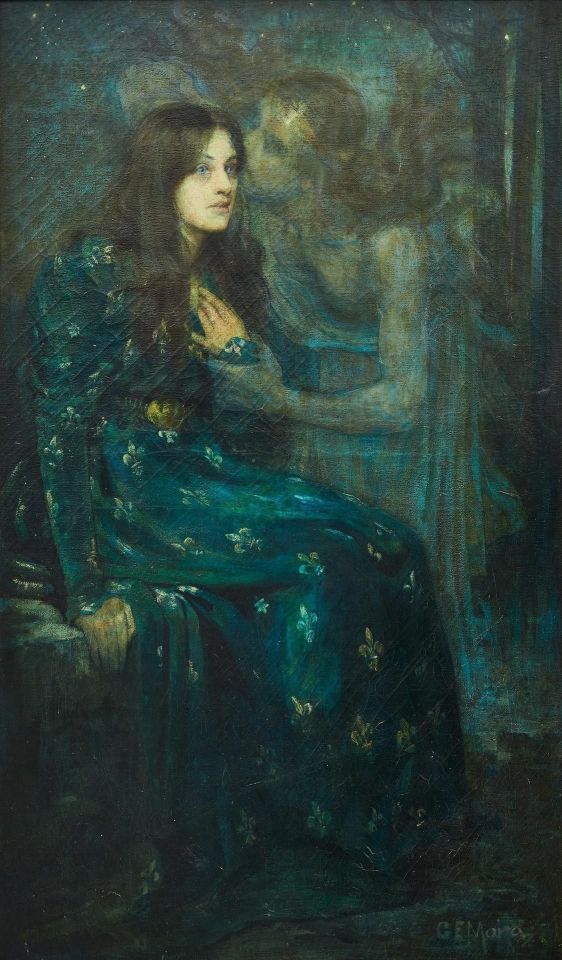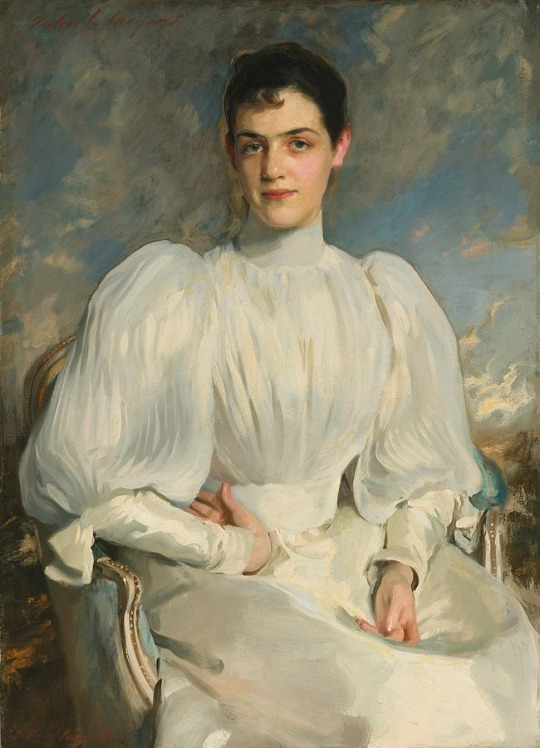#enigmatic beauties
Explore tagged Tumblr posts
Text
i've just finished my s7 rewatch and it's kinda so funny to me how much discourse people created over every bucktommy interaction when their whole arc boils down to tommy being patient and vulnerable with buck and showing up for him. like when you are not wearing shipper goggles under the name of "analysis" and don't try to reverse-engineer every word and look and shot with utmost bad faith, that's what it is. a simple and sweet story of a new exciting relationship with a guy who's understanding and willing to show up. literally the two things buck needs from a relationship but never had with his previous love interests. they are kinda sickeningly sweet and well-communicating actually lol
#yall are too serious and too strict about a show being written two weeks in advance like i love this show but picking out bits and pieces#and trying to make it all fit a narrative is kinda doing too much no one in the writing room is being that deliberate or precise or#enigmatic with their word choices as they write for a prime time network tv procedural#sometimes when a joke is played as a joke it's a joke#when a character says a character is good for another character thats what they mean#this show does not require reading between the lines for subtext it's just asking you connect the dots with common sense#and it's okay if you dont like the execution you can just say that without trying to make it an issue of morality or becoming#conspiracy theorists#anyway rant over#bucktommy#they are so precious i hope abc doesnt mess up this once in a lifetime luck they struck with tommy and continue the overall#beautiful dynamic they captured in a short few episodes#tevan#911#also not saying this to bash any of his ex girlfriends i actually liked all of them for different reasons except for natalia who was#unfortunately just a blip#mimi.txt
288 notes
·
View notes
Text

my favorite image ever in the entire world #kendalling
available as a print on my INPRNT if you love jeremy strong and his enigmatic spoon and beautiful spirit as much as i do ❤️
#ive said the words jeremy strong and his enigmatic spoon and beautiful spirit like 80 times. those words just connect with me ok#art#digital art#illustration#jeremy strong#kendall roy#GOD i just adore him#he has brought me so much joy and also tears. good tears#for me good tears are a kind of joy#<- poetry#anyways thank you jeremy. the thought of not knowing of ur presence genuinely upsets me. the idea that there is an alternate version#of me that doesnt know about jeremy strong makes me want to weep (not good this time)#but im not him. im Me#and i Love you Jeremy
220 notes
·
View notes
Text
A Silent Voice - Gerald Edward Moira

A still small voice spake unto me, "Thou art so full of misery, Were it not better not to be?"
Then to the still small voice I said; "Let me not cast in endless shade What is so wonderfully made."
To which the voice did urge reply; "To-day I saw the dragon-fly Come from the wells where he did lie. "Two Voices" -Tennyson
#philosophy#psychology#deep thoughts#writing#poetry#books#eternal love#love story#lovers#kafkaesque#poets#alfredtennyson#paintings#art#culture#history#beautiful#mysterious#enigmatic
7 notes
·
View notes
Text
This design is now available in our store
RYEY22.redbubble.com

phantom, shadowed soul, hollow realm, dark fantasy, ethereal being, spectral design, void spirit, hooded figure, futuristic skeleton, enigmatic entity, surreal art, dark aesthetics, otherworldly design, spectral art, gothic concept, fantasy character, mysterious figure, sci-fi fantasy, hyperrealistic art, haunting beauty, fantasy hooded figure, alien design, supernatural entity, bone structure design, cryptic character, dystopian fantasy, fantasy horror, spectral warrior, ominous figure, celestial phantom, dark cosmic art, mystical being.
#phantom#shadowed soul#hollow realm#dark fantasy#ethereal being#spectral design#void spirit#hooded figure#futuristic skeleton#enigmatic entity#surreal art#dark aesthetics#otherworldly design#spectral art#gothic concept#fantasy character#mysterious figure#sci-fi fantasy#hyperrealistic art#haunting beauty#fantasy hooded figure#alien design#supernatural entity#bone structure design#cryptic character#dystopian fantasy#fantasy horror#spectral warrior#ominous figure#celestial phantom
2 notes
·
View notes
Text
Who Were The Tarim Basin Mummies? Even Scientists Were Surprised. The Enigmatic, Extremely Well-preserved Mummies Still Defy Explanation—and Draw Controversy.
— By Erin Blakemore | September 15, 2023

Hundreds of bodies have been excavated from cemeteries like this one around the Tarim Basin in Xinjiang, a region of Western China. Known as the Tarim Basin mummies, these people lived some 4,000 years ago—and their ancient DNA has yielded surprising insights. Photograph By Wenying LI, XinJiang Institute of Cultural Relics And Archaeology
Though they died thousands of years ago, hundreds of bodies excavated in East Asia’s Tarim Basin look remarkably alive. They retain the hairstyles, clothing, and accoutrements of a long-past culture—one that once seemed to suggest they were migrant Indo-Europeans who settled in what is now China thousands of years ago.
But the mummies’ seemingly perfect state of preservation wasn’t their only surprise. When modern DNA research revealed the preserved bodies were people indigenous to the Tarim Basin—yet genetically distinct from other nearby populations—the Tarim Basin mummies became even more enigmatic. Today, researchers still ask questions about their cultural practices, their daily lives, and their role in the spread of modern humanity across the globe.
How Were The Tarim Basin Mummies Found?
Buried in a variety of cemeteries around the basin as long as 4,000 years ago, the naturally mummified corpses were first unearthed by European explorers in the early 20th century. Over time, more and more of the Tarim bodies were unearthed, along with their spectacular cultural relics. To date, hundreds have been found. The earliest of the mummies are about 2,100 years old, while more recent mummies have been dated to about 500 B.C.

One of the most famous mummies found in the Tarim Basin is the Princess of Xiaohe, also known as the Beauty of Xiaohe. Named for the cemetery where her body was found, she is remarkably well-preserved even down to her eyelashes. Photograph By Wenying LI, XinJiang Institute of Cultural Relics And Archaeology
Who Really Were The Tarim Basin Mummies?
At first, the mummies’ Western-like attire and European-like appearance prompted hypotheses that they were the remains of an Indo-European group of migrant people with roots in Europe, perhaps related to Bronze-Age herders from Siberia or farmers in what is now Iran.
They had blond, brown, and red hair, large noses, and wore bright, sometimes elaborate clothing fashioned from wool, furs, or cowhide. Some wore pointed, witch-like hats and some of the clothing was made of felted or woven cloth, suggesting ties to Western European culture.
Still others wore plaid reminiscent of the Celts—perhaps most notably one of the mummies known as Chärchän Man, who stood over six feet tall, had red hair and a full beard, and was buried over a thousand years ago in a tartan skirt.
Another of the most famous of the bodies is that of the so-called “Princess” or “Beauty” of Xiaohe, a 3,800-year-old woman with light hair, high cheekbones, and long, still-preserved eyelashes who seems to be smiling in death. Though she wore a large felt hat and fine clothing and even jewelry in death, it is unclear what position she may have occupied in her society.
But the 2021 study of 13 of the mummies’ ancient DNA led to the current consensus that they belonged to an isolated group that lived throughout the now desert-like region during the Bronze Age, adopting their neighbors’ farming practices but remaining distinct in culture and genetics.
Scientists concluded that the mummies were descendants of Ancient North Eurasians, a relatively small group of ancient hunter-gatherers who migrated to Central Asia from West Asia and who have genetic links to modern Europeans and Native Americans.
How Were They Mummified?
These bodies were not mummified intentionally as part of any burial ritual. Rather, the dry, salty environment of the Tarim Basin—which contains the Taklimakan Desert, one of the world’s largest—allowed the bodies to decay slowly, and sometimes minimally. The extreme winter cold of the area is also thought to have helped along their preservation.
How Were They Buried?
Many bodies were interred in “boat-shaped wooden coffins covered with cattle hides and marked by timber poles or oars,” according to researchers. The discovery of the herb ephedra in the burial sites suggests it had either a medical or religious significance—but what that religion might have been, or why some burials involve concentric rings of wooden stakes, is still unclear.

Mummified corpses were first unearthed in the Tarim Basin by European explorers in the early 20th century. Their Western-like appearance and clothing originally led researchers to believe these ancient people were migrants from Europe—but DNA later debunked that theory. Photograph By Wenying LI, XinJiang Institute of Cultural Relics And Archaeology
What Did They Eat?
Masks, twigs, possibly phallic objects, and animal bones found at the mummies’ cemeteries provide a tantalizing view of their daily lives and rituals. Though most questions about their culture remain unanswered, the burials did point to their diets and the fact that they were farmers. The mummies were interred with barley, millet, and wheat, even necklaces featuring the oldest cheese ever found. This indicates that they not only farmed, but raised ruminant animals.
What Were Their Daily Lives Like?
The Tarim Basin dwellers were genetically distinct. But their practices, from burial to cheesemaking, and their clothing, which reflects techniques and artistry practiced in far-off places at the time, seem to show they mixed with, and learned from, other cultures, adopting their practices over time and incorporating them into a distinct civilization.
Researchers now believe their daily lives involved everything from farming ruminant animals to metalworking and basketmaking—helped along by the fact that the now-desolate desert of the Tarim Basin region was once much greener and had abundant freshwater.
Researchers also believe that the Tarim Basin residents traded and interacted with other people in what would eventually become a critical corridor on the Silk Road, linking East and West in the arid desert.
But archaeologists still have much to learn about what daily life was like for these ancient humans, including who they traded with, what religious beliefs they adopted, and whether their society was socially stratified.

Most of the bodies were found buried in boat-shaped coffins like this one, with the site typically marked by oars. This coffin is covered with a cattle hide, suggesting that the Tarim Basin people raised cattle and other ruminant animals. Photograph By Wenying LI, XinJiang Institute of Cultural Relics And Archaeology
Why Are The Tarim Basin Mummies Controversial?
The amazingly preserved mummies have long fascinated archaeologists. But the Tarim Basin mummies have also become political flashpoints. The Tarim Basin is located in the modern-day Xinjiang Uyghur Autonomous Region, land claimed by China’s Uyghur minority. Uyghur nationalists claim the mummies are their forbears, but the Chinese government refutes this and has been reluctant to allow scientists to study the mummies or look at their ancient DNA.
In 2011, China withdrew a group of the mummies from a traveling exhibition, claiming they were too fragile to transport. Some research about the mummies’ DNA has been criticized as downplaying the region’s distinctness in support of China’s attempts to assimilate Uyghur people. Just as more remains to be learned about the enigmatic mummies, their future as political and national symbols remains disputed too.
#History & Culture#Tarim Basin | Mummies#Scientists#Enigmatic | Extremely Well-Preserved Mummies | Defy Explanation#Draw Controversy#Xinjiang | China ����🇳#East Asia��s Tarim Basin#Western China 🇨🇳#Buried | 4000-Year-Old#Naturally Mummified Corpses | 20th Century | European Explorers#Mummies | Western-Like Attire | European-Like Appearance#Bronze-Age Herders | Siberia Russia 🇷🇺 | Farners in Iran 🇮🇷#Western European Culture#Celts#Chärchän Man#Princess | Beauty | Xiaohe#Central Asia | West Asia#Modern Europeans | Native Americans#Boat-Shaped Wooden Coffins | Covered | Cattle Hides | Marked | Timber Poles or Oars#Barley | Millet | Wheat 🌾 | Necklaces | Oldest Cheese 🧀#Silk Road | Linked | East and West | Arid Desert 🌵#Tarim Basin | Modern-Day Xinjiang | Uyghur Autonomous Region
16 notes
·
View notes
Text

elsie wagg — john singer sargent (1893)
#mhac.txt#john singer sargent#elsie wagg#painting#i saw the actual one yesterday and i canNOT stop thinking about her#particularly the info tag...#her dad was a stockbroker. her family were high society british jews#THERE WAS A PARAGRAPH ABOUT HER POSTURING. AND I AM HAUNTED BY THE QUESTION OF IF YOU'D WANT TO TALK TO HER AT A DINNER PARTY.#i think what kills me is she's enigmatic... like YEAH i DO want to talk to her and stare at her beauty
6 notes
·
View notes
Text

Just a realistic portrait of Xiao. Definitely one of my faves. <3
#Genshin Impact Art#Xiao Fan Art#Digital Art Gallery#Fantasy Portrait#Realistic Anime#Artistic Soul#Liyue Guardian#Celestial Vigilance#Adeptus Guardian#Anime Illustration#Serene Beauty#Masked Warrior#Epic Fantasy Art#Creative Vision#Art Community#Insta Artwork#Digital Masterpiece#Art Of The Day#Enigmatic Soul#Immortal Vigil#Unique Fantasy#Xiao Artwork#Liyue Realm#Celestial Elegance#Ethereal Artistry#Digital Creators#Art Lovers#Artist On Instagram#Daily Art Inspiration#xiao genshin impact
2 notes
·
View notes
Text
I just.. you know.
Think Plo Koon's really neat.
Ilovehimsomuchiwilldieforhimokay
#plo koon#he just so neat#so perfect#so cute#so beautiful so sweet#so nice#so enigmatic#so hot 🔥🔥🔥#so soft#so fluffy#so squishy#so smart#so curious#so cuuuteee#so old#so unf
3 notes
·
View notes
Text

Midnight Blooms: The Enigmatic Black Rose Pattern!
#black roses#pattern#enigmatic#allure#darkness#beauty#floral#design#mysterious#intriguing#aesthetics#decorative#symbolism#elegance#intrigue#artistry#embellishment#sophistication#embroidery#textile#fashion#home decor#wallpaper#inspiration#unique#dramatic#edgy#enchanting#mystical#elegant
1 note
·
View note
Text

she looks like asirpa and usami... no, i shan't say it
1 note
·
View note
Text

jeremy strong and his enigmatic spoon and beautiful spirit
#cred to jeremystrong_updates on insta#well. credit for where i got this#GOD i really truly cant explain how happy he makes me. he makes me feel like....#if i turn out as a funny genuine adult (which i will be) even if im not well-known (which i wont be)#he just makes me feel like. yeah not everyones gonna get u but the people who do are gonna care about how much they do get you#and his enigmatic spoon.#kendalling#and his smile.#and his brown hat!#jeremy strong#kendall roy#and his chest hair. sorry. Okay#MEOW!!!!!!!!!!!!!!!!!!!!!!!!!!!#he is beautiful
375 notes
·
View notes
Text

Roosevelt Island, NY
Small pox hospital 🏥
0 notes
Text

tags
#⊰❣⊱ rubii . a radiant gem#⊰❣⊱ a thread . woven in the streets#⊰❣⊱ a thought . passing ideas#⊰❣⊱ aesthetic . begotten beauty#⊰❣⊱ an inbox prompt . receiving your message#⊰❣⊱ saved . thank you cutie#⊰❣⊱ answered . received your message#⊰❣⊱ meta . enigmatic notes#⊰❣⊱ open . are you ready
0 notes
Text

MUGLER, DIOR, ARMANI & The others 🌟🧲
& I shoot, I perform, I offer you the sound and beauty itself.
& I personally choose the models and work closely with a casting director to handpick the perfect team. I want more Men than Women, still want slavic, Already know, from head to toe, of exactly who I want in the creative team. Let me in life, Let us in! <3
#sasha gymn#art#music#cinema#makeup#performance#movie#beauty#dior#mugler#armani#valentino#chanel#career#push it#Group#Creativity#Set design Fantastic#Beauty By sasha#Enigmatic
0 notes
Photo

From now on, this is what I’ll call them AND THIS ONLY!!!

A nice Rumours review from Phonograph Record, April 1977.
#the enigmatic bassman#and his sweet singing wife#i also liked english beauty#fleetwood mac#stevie nicks#lindsey buckingham#christine mcvie#john mcvie#mick fleetwood#article#70s#rumours
171 notes
·
View notes
Text
Enigmatic Beauty of the Caucasus Mountains
#mountains#beauty of mountains#enigmatic beauty#caucasus#caucasus mountains#travel blog#tour#photography
0 notes